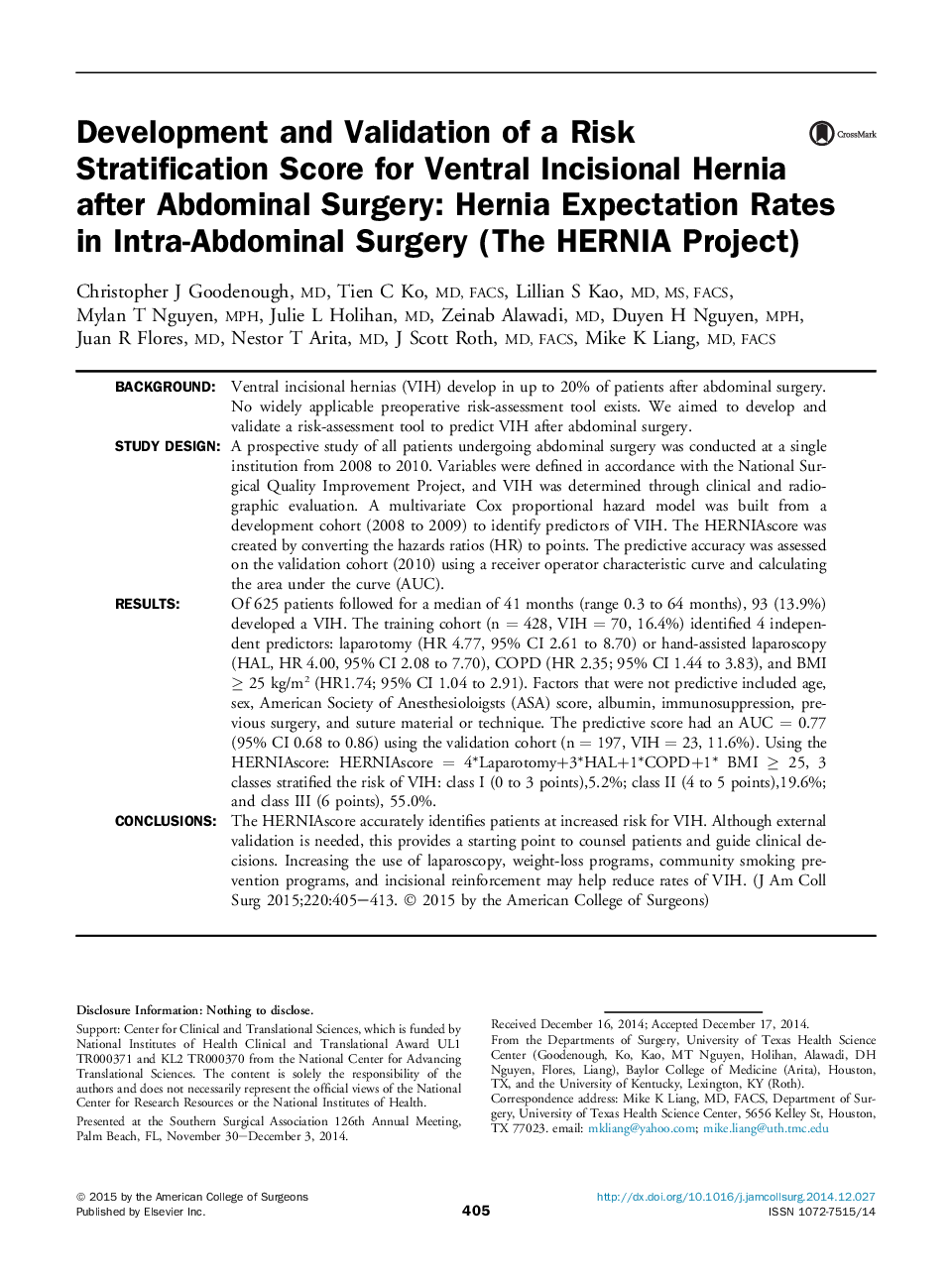| کد مقاله | کد نشریه | سال انتشار | مقاله انگلیسی | نسخه تمام متن |
|---|---|---|---|---|
| 4291330 | 1612221 | 2015 | 9 صفحه PDF | دانلود رایگان |

BackgroundVentral incisional hernias (VIH) develop in up to 20% of patients after abdominal surgery. No widely applicable preoperative risk-assessment tool exists. We aimed to develop and validate a risk-assessment tool to predict VIH after abdominal surgery.Study DesignA prospective study of all patients undergoing abdominal surgery was conducted at a single institution from 2008 to 2010. Variables were defined in accordance with the National Surgical Quality Improvement Project, and VIH was determined through clinical and radiographic evaluation. A multivariate Cox proportional hazard model was built from a development cohort (2008 to 2009) to identify predictors of VIH. The HERNIAscore was created by converting the hazards ratios (HR) to points. The predictive accuracy was assessed on the validation cohort (2010) using a receiver operator characteristic curve and calculating the area under the curve (AUC).ResultsOf 625 patients followed for a median of 41 months (range 0.3 to 64 months), 93 (13.9%) developed a VIH. The training cohort (n = 428, VIH = 70, 16.4%) identified 4 independent predictors: laparotomy (HR 4.77, 95% CI 2.61 to 8.70) or hand-assisted laparoscopy (HAL, HR 4.00, 95% CI 2.08 to 7.70), COPD (HR 2.35; 95% CI 1.44 to 3.83), and BMI ≥ 25 kg/m2 (HR1.74; 95% CI 1.04 to 2.91). Factors that were not predictive included age, sex, American Society of Anesthesioloigsts (ASA) score, albumin, immunosuppression, previous surgery, and suture material or technique. The predictive score had an AUC = 0.77 (95% CI 0.68 to 0.86) using the validation cohort (n = 197, VIH = 23, 11.6%). Using the HERNIAscore: HERNIAscore = 4∗Laparotomy+3∗HAL+1∗COPD+1∗ BMI ≥ 25, 3 classes stratified the risk of VIH: class I (0 to 3 points),5.2%; class II (4 to 5 points),19.6%; and class III (6 points), 55.0%.ConclusionsThe HERNIAscore accurately identifies patients at increased risk for VIH. Although external validation is needed, this provides a starting point to counsel patients and guide clinical decisions. Increasing the use of laparoscopy, weight-loss programs, community smoking prevention programs, and incisional reinforcement may help reduce rates of VIH.
Journal: Journal of the American College of Surgeons - Volume 220, Issue 4, April 2015, Pages 405–413